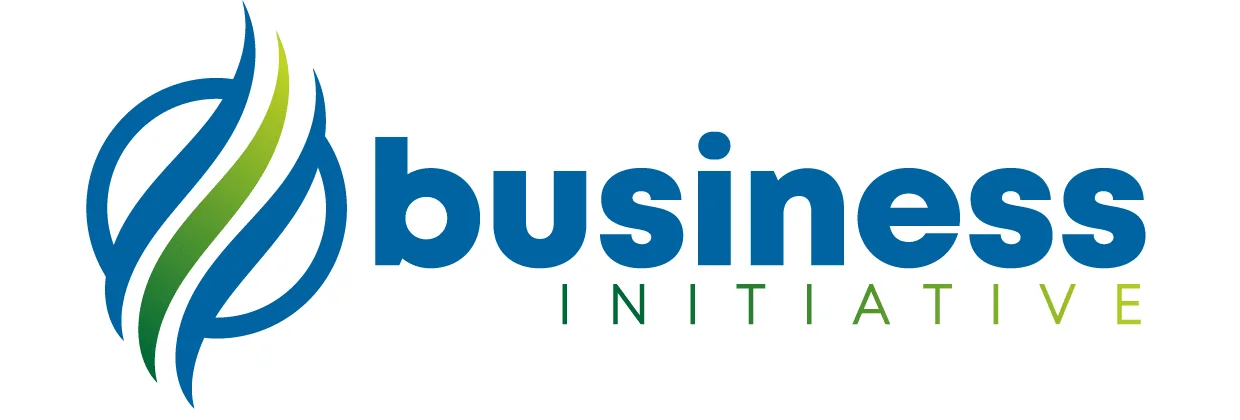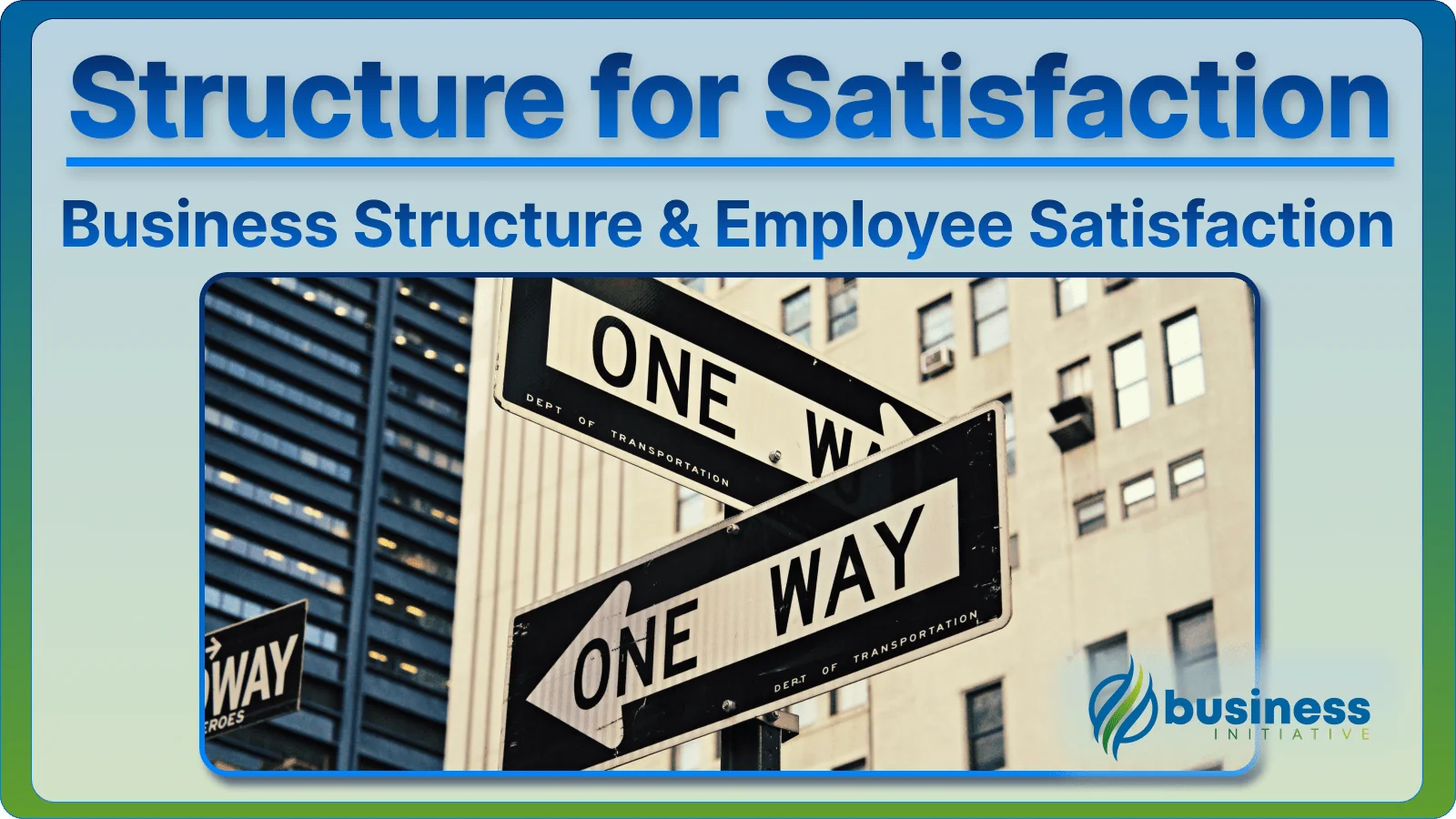Employee satisfaction plays a vital role in the success of any business.
A happy and engaged workforce can lead to increased productivity, lower turnover rates, and improved overall performance.
 Key Takeaways
Key Takeaways
- Flatter structures enhance satisfaction, engagement, and commitment in most industries.
- Tech and creative sectors thrive with decentralized, collaborative structures.
- Finance and manufacturing may need hierarchies for stability and career paths.
- Autonomy and decision-making boost satisfaction across all structures.
- Consider industry context, compensation, work-life balance, and culture when optimizing.
Entrepreneurs and business owners must understand the impact of their chosen business structure on employee satisfaction and retention, especially given the competitive nature of the modern job market.
This article will explore the relationship between different business structures and employee satisfaction, taking into account industry-specific trends and factors that influence satisfaction levels.
toc
 Table of Contents
Table of Contents
Factors Influencing Employee Satisfaction
There are numerous factors that can influence employee satisfaction, including but not limited to:
1. Compensation and benefits:
Employees are likely to be satisfied if they feel they are being paid fairly for their work and receive benefits such as health insurance, retirement plans, and paid time off.
2. Work-life balance:
A healthy work-life balance is important for employee satisfaction.
This includes flexible work arrangements, reasonable work hours, and time off for personal and family obligations.
3. Opportunities for growth and development:
Employees want to feel that they are growing and developing in their careers.
Employers can provide opportunities for training, education, and career advancement to keep employees engaged and motivated.
4. Job security:
Employees want to feel secure in their jobs and know that their employment is stable.
Employers can provide job security through clear communication about the company’s financial health and stability, and by avoiding layoffs and downsizing whenever possible.
5. Organizational culture:
A positive organizational culture can contribute to employee satisfaction.
This includes a supportive and inclusive work environment, clear communication, and a sense of shared values and purpose.
6. Leadership and management styles:
The leadership and management styles of an organization can have a significant impact on employee satisfaction.
Effective leaders and managers are supportive, communicative, and provide clear expectations and feedback.
7. Employee autonomy and involvement in decision-making:
Employees want to feel that they have a say in the decisions that affect their work.
Employers can provide opportunities for employee input and involvement in decision-making, which can increase job satisfaction and engagement.
It’s essential to consider these factors when examining the relationship between business structure and employee satisfaction, as they can vary significantly between different industries and organizations.
Industry-Specific Trends
The relationship between business structure and employee satisfaction can also be influenced by trends specific to particular industries.
For instance, in the technology sector, a flat organizational structure with fewer hierarchical levels can lead to higher levels of employee satisfaction, as it promotes collaboration and innovation.
According to a 2016 Gallup study, employee engagement is highest in the information sector, which includes technology companies.
Conversely, in more traditional industries such as finance and manufacturing, a more hierarchical structure with clearly defined roles and responsibilities may be preferred, as it provides stability and a clear career progression path.
The same Gallup study found that employee engagement is lowest in the manufacturing and production sector.
In addition to the trends mentioned above, there are several other industry-specific trends worth examining when it comes to the relationship between business structure and employee satisfaction.
- In the hospitality industry, where service quality is paramount, a a survey found that employees who have more autonomy and decision-making power reported higher levels of job satisfaction.
This suggests that businesses in this sector may benefit from adopting a more decentralized organizational structure.
- Finally, in the creative industries such as advertising and design, a survey found that employees value a culture of creativity and innovation over hierarchical structures.
By fostering an environment where employees feel comfortable sharing ideas and taking risks, businesses can attract top talent and retain their most valuable employees.
By understanding these industry-specific trends, entrepreneurs can make informed decisions about their business structure to improve employee satisfaction, retention rates, and overall performance.
Statistical Analysis
- A 2018 study published in the Journal of Business and Psychology found that employees in flatter organizations reported higher levels of job satisfaction, engagement, and organizational commitment.
This is consistent with the idea that fewer hierarchical levels can lead to increased collaboration, innovation, and employee involvement in decision-making.
However, the relationship between business structure and employee satisfaction is not universally consistent.
- A 2017 study by the Swiss Economic Institute found that employee satisfaction remains high in Switzerland, despite the prevalence of hierarchical structures in Swiss companies.
This suggests that factors such as strong social safety nets, job security, and a culture that values work-life balance may mitigate the potential negative impact of a hierarchical structure on employee satisfaction.
-
In the retail industry, a 2018 study found that unhappy and unengaged staff members are said to be 10 per cent less productive.
-
A 2023 study showed that helping employees get into a flow stte improved organizational outcomes, such as employee engagement and productivity significantly.
The study also found that offering opportunities for learning and development can contribute to higher levels of job satisfaction.
- In the education sector, a 2018 study found that employees in decentralized educational institutions reported higher levels of job satisfaction and commitment than those in more hierarchical institutions.
Decentralized institutions allow for greater autonomy and involvement in decision-making, which can lead to increased job satisfaction.
- A 2020 study of the nonprofit sector revealed that organizations with flatter organizational structures had higher levels of employee engagement and retention.
Nonprofits may benefit from adopting flatter organizational structures as they often have limited resources and need to rely on teamwork and collaboration to achieve their mission.
The relationship between business structure and employee satisfaction is complex and influenced by numerous factors, including industry-specific trends, compensation, work-life balance, and organizational culture.
FAQs - Frequently Asked Questions About Business Structure & Employee Satisfaction

How does business structure affect employee satisfaction?
Flatter organizational structures typically lead to higher employee satisfaction and engagement.
The impact varies by industry, with tech companies benefiting most from decentralized approaches.
Learn More...
Research shows that employees in flatter organizations report significantly higher levels of job satisfaction, engagement, and organizational commitment.
A 2018 study published in the Journal of Business and Psychology found that fewer hierarchical levels lead to increased collaboration, innovation, and employee involvement in decision-making.
However, the relationship isn't universal - traditional industries like finance and manufacturing may still require hierarchical structures for stability and clear career progression.
The key factors that influence satisfaction regardless of structure include compensation and benefits, work-life balance, opportunities for growth, job security, organizational culture, leadership styles, and employee autonomy.
Industry context matters significantly, as a 2016 Gallup study found employee engagement is highest in the information sector but lowest in manufacturing and production.
What business structure is best for employee retention?
Decentralized structures with employee autonomy and decision-making involvement show the highest retention rates.
Learn More...
Organizations that prioritize employee autonomy and involvement in decision-making consistently show better retention outcomes across industries.
In the technology sector, flat organizational structures with fewer hierarchical levels promote collaboration and innovation, leading to higher retention.
The hospitality industry research shows that employees with more autonomy and decision-making power report higher job satisfaction levels.
A 2020 study of the nonprofit sector revealed that organizations with flatter structures had higher levels of employee engagement and retention.
However, the 'best' structure depends on your industry context - creative industries value innovation culture over hierarchy, while traditional sectors may need clear progression paths.
Key retention factors include providing growth opportunities, maintaining work-life balance, offering competitive compensation, and fostering positive organizational culture.
Do flat organizational structures always improve employee satisfaction?
Not always - it depends on the industry and company culture.
Learn More...
While multiple studies suggest flatter organizations generally lead to higher satisfaction, the relationship isn't universally consistent across all contexts.
A 2017 study by the Swiss Economic Institute found that employee satisfaction remains high in Switzerland despite the prevalence of hierarchical structures in Swiss companies.
This suggests that factors like strong social safety nets, job security, and work-life balance culture can mitigate potential negative impacts of hierarchical structures.
Traditional industries such as finance and manufacturing often prefer hierarchical structures because they provide stability and clear career progression paths.
The effectiveness of flat structures depends on several factors:
- Industry requirements and regulatory compliance needs
- Company size and complexity of operations
- Employee preferences and cultural expectations
- Leadership capability to manage without traditional hierarchy
Success with flat structures requires strong communication, clear role definitions, and effective leadership at all levels.
Which industries benefit most from decentralized business structures?
Technology, creative industries, hospitality, education, and nonprofit sectors benefit most from decentralized structures.
Learn More...
The technology sector shows the strongest correlation between flat organizational structures and employee satisfaction, as it promotes collaboration and innovation.
According to a 2016 Gallup study, employee engagement is highest in the information sector, which includes technology companies that often use decentralized approaches.
Creative industries such as advertising and design value a culture of creativity and innovation over hierarchical structures, with employees preferring environments where they can share ideas and take risks.
In the hospitality industry, employees with more autonomy and decision-making power report significantly higher levels of job satisfaction.
The education sector benefits from decentralization, with a 2018 study showing that employees in decentralized educational institutions reported higher job satisfaction and commitment than those in hierarchical institutions.
Nonprofit organizations with flatter structures demonstrate higher employee engagement and retention, particularly important given their limited resources and need for teamwork.
These industries share common characteristics that make decentralization effective:
- High need for innovation and creative problem-solving
- Collaborative work environments
- Knowledge-based work requiring employee expertise
- Customer service focus requiring quick decision-making
What are the key factors that influence employee satisfaction in any business structure?
Compensation, work-life balance, growth opportunities, job security, culture, leadership, and employee autonomy are the primary factors.
Learn More...
Compensation and benefits form the foundation of employee satisfaction, including fair pay, health insurance, retirement plans, and paid time off.
Work-life balance has become increasingly important, encompassing flexible work arrangements, reasonable hours, and time for personal obligations.
Opportunities for growth and development keep employees engaged through training, education, and clear career advancement paths.
Job security provides stability through clear communication about company health and avoiding unnecessary layoffs.
Organizational culture creates the work environment through supportive and inclusive practices, clear communication, and shared values.
Leadership and management styles significantly impact satisfaction through supportive, communicative approaches with clear expectations and feedback.
Employee autonomy and involvement in decision-making allows workers to have input on decisions affecting their work, increasing engagement.
Research shows these factors can vary significantly between industries and organizations, making it essential to consider context when designing business structures.
A 2023 study demonstrated that helping employees achieve flow state through these factors improved organizational outcomes like engagement and productivity significantly.
How can small businesses optimize their structure for employee satisfaction?
Focus on employee autonomy, clear communication, and growth opportunities while maintaining necessary oversight.
Learn More...
Small businesses have unique advantages in creating satisfying work environments due to their size and flexibility.
Implement a flatter organizational structure that allows for direct communication between leadership and employees, reducing bureaucratic barriers.
Provide employees with meaningful autonomy and decision-making authority within their roles, which research consistently shows improves satisfaction.
Create clear growth and development opportunities, even if traditional promotion paths are limited due to company size.
Foster a strong organizational culture through regular communication, team building, and shared company values.
Offer competitive compensation packages that may include equity participation, flexible benefits, or unique perks that larger companies can't provide.
Maintain job security by being transparent about company performance and involving employees in strategic discussions when appropriate.
Consider industry-specific needs - tech startups might benefit from completely flat structures, while service businesses might need some hierarchy for customer service consistency.
Regularly evaluate and adjust your structure based on employee feedback and business growth, as what works at 5 employees may not work at 50.
What are the disadvantages of hierarchical business structures for employee satisfaction?
Hierarchical structures can reduce employee autonomy, limit innovation, and create communication barriers.
Learn More...
Hierarchical structures often limit employee autonomy and involvement in decision-making, which research shows are crucial factors for job satisfaction.
Multiple management layers can create communication barriers, slowing down information flow and reducing employee engagement with company goals.
Rigid hierarchies may stifle innovation and creativity, as employees feel less empowered to share ideas or take initiative.
Career advancement can become bottlenecked, with limited opportunities for growth due to the pyramid structure of traditional hierarchies.
Decision-making processes tend to be slower, which can frustrate employees who see opportunities for improvement but lack authority to act.
The Gallup study referenced in research shows that employee engagement is lowest in manufacturing and production sectors, which traditionally use hierarchical structures.
However, it's important to note that hierarchical structures aren't inherently bad - they can provide:
- Clear career progression paths
- Defined roles and responsibilities
- Stability and predictability
- Effective coordination in complex operations
The key is finding the right balance for your industry and organizational needs, as some sectors still benefit from hierarchical approaches when combined with strong culture and employee support systems.
How do compensation and benefits impact employee satisfaction across different business structures?
Fair compensation and comprehensive benefits are fundamental to satisfaction regardless of organizational structure.
Learn More...
Compensation and benefits serve as the foundation for employee satisfaction across all business structures, but their impact can vary based on how they're implemented.
In flatter organizations, compensation strategies often include profit-sharing, equity participation, or performance-based bonuses that align employee interests with company success.
Hierarchical structures may rely more on traditional salary scales and structured benefit packages, which can provide predictability but may limit upside potential.
Health insurance, retirement plans, and paid time off are essential benefits that employees expect regardless of organizational structure.
The article emphasizes that employees must feel they are being paid fairly for their work, which requires regular market analysis and internal equity reviews.
Different structures may offer unique compensation advantages:
- Flat structures: Stock options, profit sharing, flexible benefit choices
- Hierarchical structures: Clear salary progression, comprehensive corporate benefits
- Hybrid approaches: Merit-based advancement with equity participation
Research shows that compensation transparency, regardless of structure, significantly improves employee satisfaction and trust.
The key is ensuring that compensation philosophy aligns with organizational values and provides competitive packages that support employee financial security and growth.
Practical Insights
By examining these industry-specific statistics, you can gain insight into how different business structures impact employee satisfaction and productivity within their respective industries.
While some studies suggest that flatter organizations may lead to higher levels of employee satisfaction and engagement, it’s crucial to consider the unique context of each industry and organization when making decisions about business structure.
Entrepreneurs and business owners should regularly evaluate their organizational structure and make adjustments as needed to promote employee satisfaction and retention.
By understanding the relationship between business structure and employee satisfaction, leaders can make informed decisions that will ultimately benefit their employees and their organization as a whole.
Don’t wait to make a positive impact on your employees’ satisfaction levels…
Reevaluate your business structure and implement necessary changes today!
Sources
- Gallup: Employee Engagement Drives Growth
- Journal of Business and Psychology: The Bright Side of Being Flat: The Relationship Between Organizational Structure and Employee Engagement
- Swiss Economic Institute: Employee Satisfaction in Switzerland
- Retail Gazette: The Secret to Maximising Employee Satisfaction
- New McLean Company Research: Helping Employees Achieve Flow State
- Journal of Business and Psychology: Employee Satisfaction in Decentralized Educational Institutions
- HR Dive: Preventative Care as a Major Savings Opportunity for Employers
- Hospitality Net: The Secret to Maximising Employee Satisfaction
- Benjamin J. Butler: Employee Satisfaction in Creative Industries
- Taylor Benefits Insurance: Group Health Insurance Plans


